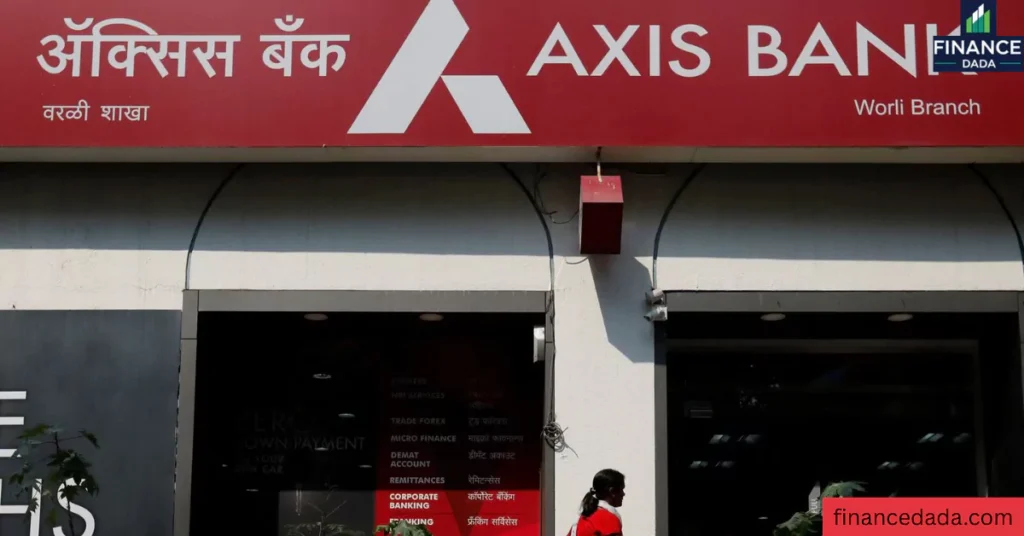Axis Bank Share Price Dips Below ₹1,170 Despite ₹28,055 Crore Net Profit in FY25
Axis Bank faces market headwinds as its share price slides, but strong financial performance and improving asset quality signal resilience for the private lender.
A Surprising Dip in Axis Bank Stock
Axis Bank, India’s third-largest private sector lender, saw its share price drop below ₹1,170 on July 1, 2025, closing at ₹1,165.80 on the NSE, a decline of 0.63% for the day. This slide comes despite the bank reporting a robust consolidated net profit of ₹28,055 crore for FY25, marking a 6.3% increase from ₹26,386 crore in FY24. The unexpected dip has sparked discussions among investors, with some expressing concern over the stock’s performance amid a strong financial year.
The Axis Bank share price has been under pressure, falling 6% over two sessions from its recent low, as noted in posts on X. Despite this, the stock remains 4.7% above its 200-day moving average, indicating a sideways consolidation phase rather than a sharp downtrend. Investors are now questioning whether this dip presents a buying opportunity or signals deeper challenges.

Strong Financials Underpin Resilience
Axis Bank delivered a solid performance in FY25, with total income rising 12.23% to ₹1,47,934 crore from ₹1,31,810 crore in FY24. The bank’s net interest income (NII) grew 9% to ₹54,348 crore, driven by an 8% increase in net advances to ₹10,40,811 crore, with retail loans accounting for 60% of the portfolio. Notably, small business banking (SBB) and rural loans grew by 17% and 7% year-on-year, respectively, reflecting strong demand in these segments.
The bank’s asset quality also improved, with gross non-performing assets (NPAs) dropping to 1.28% in Q4 FY25 from 1.43% a year earlier, and net NPAs slightly up at 0.33%. This improvement, coupled with a capital adequacy ratio of 17.07% (Basel III), underscores Axis Bank’s financial stability. The bank added 170 branches in Q4, expanding its network to 5,876 domestic branches and 13,941 ATMs, further strengthening its presence in the Indian banking sector.
Despite these positives, Q4 FY25 saw a marginal 0.2% decline in net profit to ₹7,117.5 crore, compared to ₹7,129.67 crore in Q4 FY24, primarily due to higher provisions of ₹1,359 crore. However, the bank’s fee income rose 12% year-on-year to ₹6,338 crore, and operating profit for FY25 grew 13% to ₹42,105 crore, highlighting operational efficiency.
Why Is the Stock Under Pressure?
The recent Axis Bank share price dip has raised eyebrows, especially given the bank’s strong fundamentals. Analysts point to several factors contributing to the decline. ICICI Securities downgraded the stock from “Buy” to “Add” in May 2025, citing concerns over slower home loan growth (1% year-on-year) and a slight contraction in net interest margin (NIM) to 3.97% in Q4 FY25 from 4.16% a year earlier. The downgrade, coupled with market expectations of margin moderation and higher credit costs, may have dampened investor sentiment.
Additionally, broader market dynamics and profit-taking after a 11.25% rally in the past month could be weighing on the stock. Posts on X reflect mixed sentiment, with some users expressing concern over the rapid decline, questioning if underlying issues like fraud or management changes are at play, though no such reports have been confirmed.
Analysts remain cautiously optimistic. Jefferies maintains a “Buy” rating with a target price of ₹1,450, citing improving growth and liquidity as factors that could narrow the valuation gap with peers. Meanwhile, Nuvama lowered its target to ₹1,220 but retained a “Buy” recommendation, noting the stock’s attractive valuation at 1.5x FY26 book value.
What Should Investors Do?
For investors, the current Axis Bank share price dip may present a strategic opportunity. Technical analysts suggest monitoring support levels around ₹1,160 and resistance near ₹1,200 for short-term trading. The stock’s price-to-earnings (P/E) ratio of 13.78 based on trailing twelve-month earnings remains competitive, and its market capitalization of ₹362,950 crore reflects its strong position in the Nifty Bank index.
Long-term investors may find Axis Bank appealing due to its diversified portfolio, including retail banking, corporate banking, and digital banking services like mobile banking and UPI. The bank’s partnerships, such as with Antara Senior Care, and innovative offerings like Axis Max Life Insurance’s AI-enabled Bandhan 2.0 platform, highlight its forward-looking approach.
However, risks remain. Slower deposit growth (10% year-on-year to ₹11,72,952 crore) and potential interest rate cuts could pressure margins further. Investors should watch macroeconomic trends, including inflation and RBI policy updates, which could impact the banking sector.
A Resilient Player in a Dynamic Market
Despite the recent stock price dip, Axis Bank’s strong FY25 performance, improving asset quality, and strategic expansion make it a compelling choice in the Indian banking sector. The bank’s focus on sustainable growth and its robust capital structure position it well for future opportunities, particularly as India’s economy continues to grow.
Investors are advised to stay updated on Axis Bank share price trends, Q1 FY26 results, and broader market news to make informed decisions. With a final dividend of ₹1 per share proposed for FY25, Axis Bank remains a stock to watch in 2025.
Track Axis Bank stock updates and banking sector trends for smarter investment choices.
Also Read: Globe Civil Projects Stock Surges on Debut, Lists at 27% Premium on NSE









